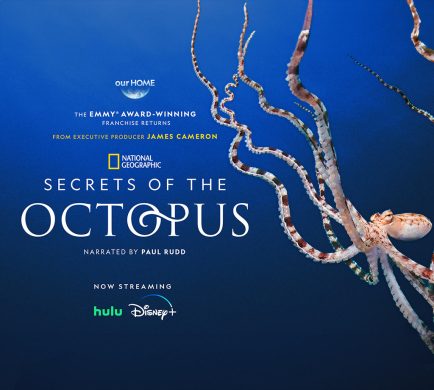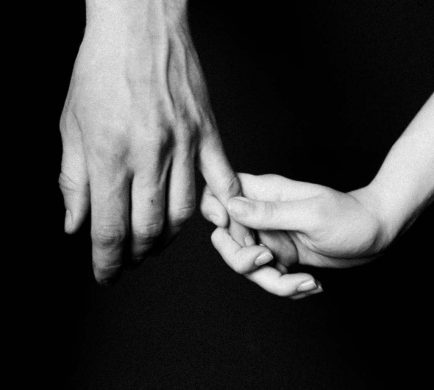By Pamela Gail Johnson
A Native American story tells about how God gathered his animal advisers together to help him decide where to hide the Secret to a Happy Life from humans.
He first asked the Eagle, “Where shall I put it?”
The Eagle answered, “I shall hide it at the top of the highest mountain. Man will never find it there.”
God considered this but decided against it. “One day, Man will go there,” he said.
Next, he asked the Clam, “Where shall I put it, little Clam?”
“I will hide it at the bottom of the deepest ocean,” the Clam answered.
This seemed like a better idea, but the Lord hesitated again. “Man will go there someday,” he said after some thought.
Then the wise Owl stepped forward. “Though I regretfully cannot take it there myself,” he intoned, “perhaps you ought to hide the secret on the moon.”
After considering this, God finally came to the same conclusion as before: “No. There, too, Man shall go.”
After some period of reflection, the humble Opossum came forward. “Perhaps,” he said, so softly that he could barely be heard, “the secret should be hidden in the heart of Man.” There was an awed silence among the animals.
Finally, the Lord spoke: “Yes, cunning Opossum, that will be the last place Man will look.”
This story reminds us of something that we already know but are often reluctant to embrace: Our happiness is inside us. The challenge is knowing how to find it.
The problem? Our brains are hardwired to quickly recognize and help us get away from things that can hurt us. This goes back to our caveman days when we had to protect ourselves from gigantic, hairy, scary creatures and such. Our brains evolved to help us recognize danger and keep us safe. That’s why it’s always easier, and maybe even more natural, for us to see what’s wrong before we can see what’s right. Having a positive outlook usually requires a conscious effort until it becomes a habit or our go-to mindset.
Most of us are also culturally conditioned to think we’ll be happy when we get the next bright, shiny new thing on our I’ll Be Happy When List. You know what I’m talking about: that dream career, that oh-so-lovable pet, that super-sexy/super-fast dream car, that gorgeous spouse, the big house, the perfect kids, the vacations in Europe, a healthy financial portfolio; the list goes on and on.
Instead of recognizing that our happiest moments often happen on the way to the destination, we instead take them for granted, believing that the goal is the ultimate happiness prize.
Happiness is rarely an outside job. It’s when we look inside our homes, our relationships, and our lives that we find it hiding there.
So, what is practical happiness? It’s the foundation for realistic happiness. It means expecting that unhappiness, stress, fear, chaos, and annoyances will zap your happiness sometimes while trusting that you can manage these Happiness Zappers. It understands that happiness is unique for each of us, yet the experiences that make us happy are fluid and change. It recognizes that happiness is the rush of excitement but also the serenity of contentment and the many other types of happiness in between—thirty-one of them, in fact.
I began to realize that everyone could access happiness at almost any time if they were able to recognize some simple, realistic principles about how happiness worked.
With that goal in mind, I came up with the four practical happiness principles:
Happiness is personal.
Happiness Zappers can be managed.
Happiness changes as you change.
Happiness is bigger than you think.
Principle One: Happiness is Personal
Sounds obvious, right? It comes with a caveat most of us miss …
Just because something “sounds” obviously doesn’t make it easy or even natural.
Let’s define what happiness really is.
Happiness is when you naturally feel good in the moment.
And, what makes you feel good can change moment by moment.
Sometimes happiness is as simple as feeling a little better than you felt the moment before. Other times, it comes from accomplishing something. And sometimes, happiness is your state of being for no particular reason.
Even when people share the same happy event, they don’t experience it the exact same way, making it unique for each participant.
Personal happiness shouldn’t be judged. What makes you happy may or may not make someone else happy. And vice versa.
Principle Two: Happiness Zappers Can be Managed
What’s a Happiness Zapper? It’s simply an experience that takes away some of your happiness.
We’d like to be happy all of the time. However, we know that’s simply unrealistic.
Each day, every single human being on the planet will experience different Happiness Zappers. How we choose to manage them significantly impacts how long they impact us and our happiness.
There are five types of Happiness Zappers that we either manage or they manage us:
Unhappiness is most often connected to loss when we must create a new normal over time. The death of someone or a pet we loved is the ultimate loss. Yet other losses redefine our lives, too: unwanted career changes, health challenges, friend or family conflicts, and other normal, expected, or even unexpected life changes.
Stress is when we feel pressure or tension from things that require a response from us that can impact us mentally, emotionally, physically, and spiritually.
Fear creates a physiological change that influences our behavior when we are actually threatened by a dangerous situation or we believe something may threaten our physical or emotional safety in the future.
Chaos happens when things are in disarray, unorganized, and confusing.
Annoyances are when someone or something
irritates or bothers us to the point that our mood is adversely affected.
Creating a ZAP-MAP or Zapper Management Action Plan is one of the easiest ways to manage your Happiness Zappers in four steps:
1. Identify the Happiness Zapper.
2. Specify the type of zapper: unhappiness,
stress, fear, chaos, or annoyances.
3. Decide if the zapper is controllable,
uncontrollable, or a bit of both.
4. Determine actions you can take to manage
the zapper.
Each person will manage their Happiness Zapper differently. And, you may need to adjust how you manage any particular Happiness Zapper as circumstances change. Life is fluid, and what’s needed to manage the things that adversely impact our happiness should be flexible, too.
Principle Three: Happiness Changes as You Change
On a subconscious level, you know that what makes you happy changes because you change. Sounds pretty straightforward, right? It’s not.
Happiness is a feeling, and feelings trigger emotional responses making the principle challenging to apply.
Think about it:
How often do you try to recreate experiences that used to make you feel happy? And, when that doesn’t work out the way you want it to, you get upset because the happy feelings you remember from the past aren’t happening right now because “something” isn’t quite the same as it used to be.
What’s really happening here – you’re missing out on experiencing your present happy moments to their fullest because you’re emotionally stuck in the past.
Life, and by extension, happiness changes as a result of:
Maturity comes from the natural process of growing older and the experiences that influence our mental and emotional behavior.
Life changes are big events that alter our perspective and even our actual daily existence.
Experiences provide us with knowledge and empathy as a result of what we do, see, and feel.
Unexpected Moments show up in our life without warning or anticipation but can shift everything in an instant.
Recognizing these catalysts of change makes it easier for us to manage them. Which then gives us the emotional capacity to fully embrace the present and recognize all of the current experiences that make us happy too.
Principle Four: Happiness is Bigger Than You Think
One of the problems with feeling happier is that people think happiness is a singular feeling. It’s often associated with moments when we’re laughing, feeling joyful, or being playful. All very high energetic vibration types of happiness.
Yet, if we define happiness as naturally feeling good at the moment, it’s much bigger than you think.
There are many moments that make us feel good or happy, yet we don’t associate them with happiness even when we should.
A few include:
1. When you feel inspired to learn something new.
2. When you feel relief when something unpleasant didn’t happen.
3. When you feel content because you really wouldn’t change that much about your life.
The Society of Happy People identified Thirty-One Types of Happiness to help you identify how big happiness really is. And you can get the SOHP Happiness Counter which lists all of the types of happiness: sohp.com/gift.
Sometimes, the quickest way to experience more happiness is to actually notice more of the happy moments that are already part of your daily life.
Once you start thinking about happiness with a Practical Happiness mindset, you’ll notice more of your happy experiences when they happen.
And, when a Happiness Zapper happens, you’ll approach the situation from a how do I manage it perspective instead of a why is this happening to me one.
Happiness is more abundant when we acknowledge the moments when we naturally feel good—and sometimes that only means feeling a little better in this moment than the one before.
Adopting a Practical Happiness mindset takes practice. Yet, when you practice it consistently, you’ll discover the real question each day is: What does happiness mean to me right now?







